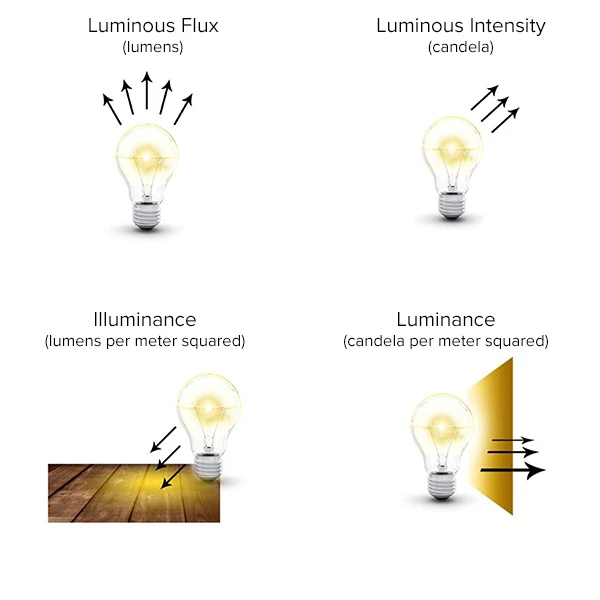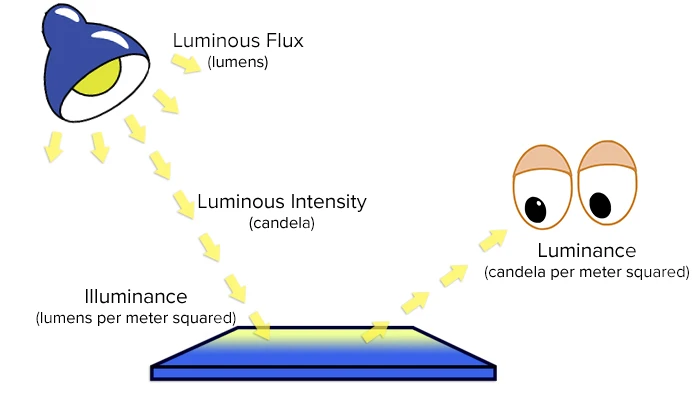Understanding Photometry

Photometry is the science of the measurement of visible light as perceived by our eyes. Common photometric applications include testing the brightness of display and uniformity of projection systems. Luminous flux, luminous intensity, illuminance and luminance are the 4 basic concepts of photometry.
Luminous flux, expressed in units of lumens (lm), is a measure of the total amount of light that’s emitted by a light source like light bulb. For luminous intensity, expressed in candela (cd) whereby 1 cd = 1 lm per steradian, it is used to measure the amount of light emitted by a light source in a particular direction. This measurement is useful when comparing equipment such as spot lights or automotive front lighting that produced focused light beam.
Illuminance, expressed in lux (lumens per meter squared), measures the amount of light that falls onto a surface. For instance, it can be used to determine if there is enough light shining onto the operating table for surgeons to perform surgical procedures. Luminance measures the amount of light reflected from a surface or emitted from a light source such as display screen. The SI unit for luminance is candela per meter squared and nit is another non SI term used whereby 1 nit = 1 cd/m2. This measurement is commonly used in the evaluation of cockpit display and instrument panel, and road lighting.
The interrelationship between these different measurements can be seen below.

